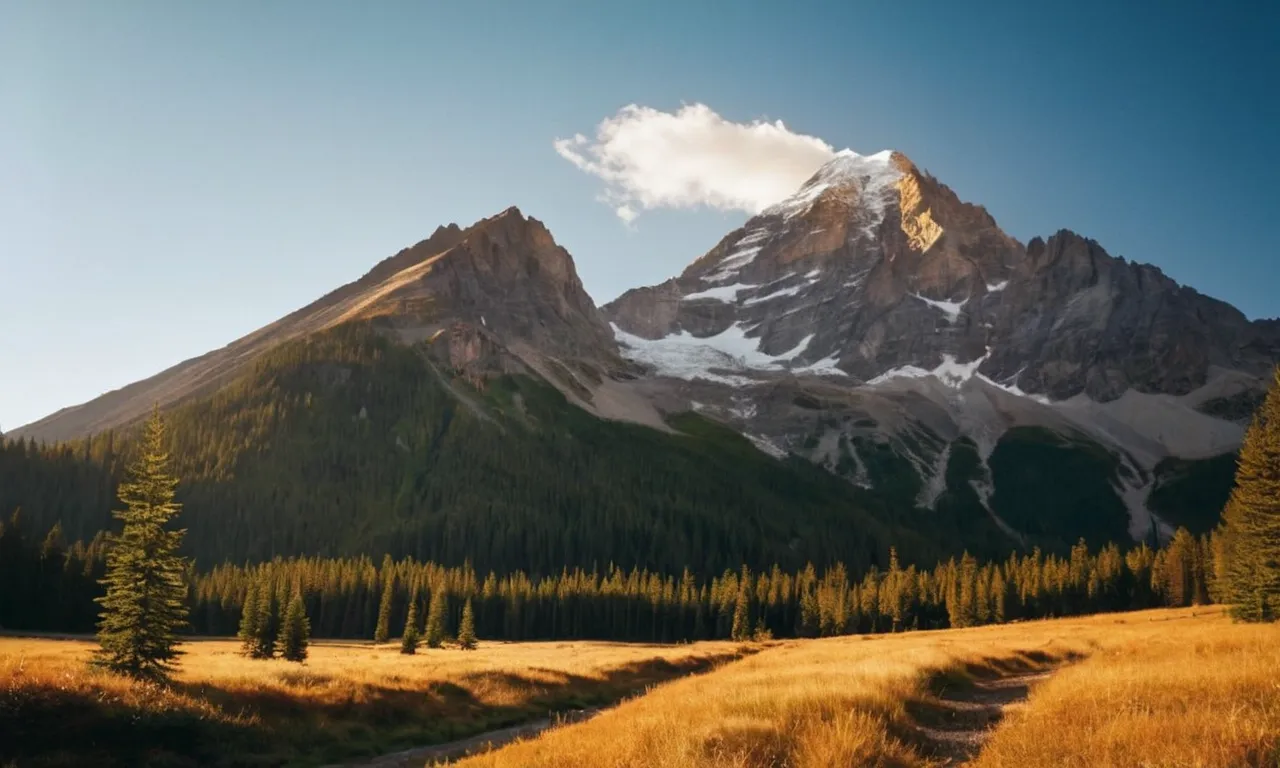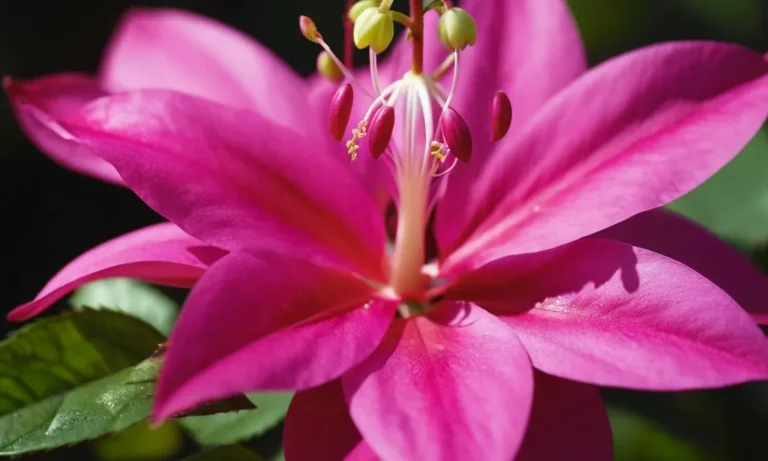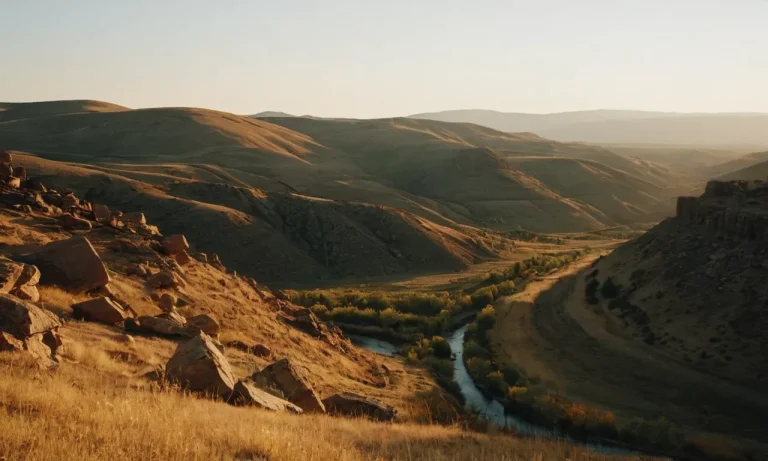What Is The Mountain Of God?
The imposing Mount Kailash in the Himalayas has captivated spiritual seekers and adventurers for centuries. Rising over 22,000 feet, this remote peak is believed by some to be the earthly home of the Hindu god Shiva.
If you’re short on time, here’s a quick answer: Mount Kailash in Tibet is considered the mythical Mount Meru or ‘mountain of god’ in Buddhist and Hindu religions. It is regarded as the earthly home of deities and a place of spiritual power.
In this comprehensive guide, we will explore the history, geography, religious significance and climbing attempts on Mount Kailash to unravel the mystique around this sacred peak.
Geography and Location of Mount Kailash
Physical Attributes and Terrain
Mount Kailash, located in the remote Himalayas of western Tibet, is considered one of the most sacred mountains in the world. At an elevation of 22,028 feet (6,714 meters), it stands majestically amidst the rugged landscape, its slopes blanketed in gleaming white snow and ice.
Often referred to as the “Precious Snow Mountain”, Mount Kailash features a distinctive pyramidal shape, with four nearly symmetrical faces, that makes it visually striking and immediately recognizable.
The terrain surrounding the mountain is harsh and barren. The access routes are rugged dirt tracks passing through steep valleys and over high mountain passes located at altitudes over 16,000 feet. Roads in the area are generally unpaved and treacherous to traverse.
The weather is also highly unpredictable, with sudden storms and blizzards common occurrences.
Despite the challenges posed by its remote location and difficult surrounding environment, Mount Kailash holds profound religious significance in four major Eastern religions – Hinduism, Buddhism, Jainism, and the indigenous Tibetan Bon religion.
This has led to thousands of pilgrims undertaking the arduous journey to the mountain every year.
Restricted Access to the Peak
Unlike many famous peaks, Mount Kailash remains an enigma to climbers, as the Chinese government has banned mountaineering expeditions from attempting to scale its slopes. Climbing the mountain is considered highly disrespectful and a sacrilege to its sanctity.
No person has officially set foot on the actual summit.
A common myth holds that the only person to have reached the top is the 8th century Buddhist yogi Milarepa, who was said to have magically flown to the summit. While an intriguing legend, factual verification remains lacking.
The restriction on mountaineering expeditions has prevented extensive scientific surveys of the mountain. Much mystery still surrounds its precise height and other attributes. Estimates peg the summit elevation between 22,028 and 22,501 feet, but an exact number has not been conclusively established.
While climbing is prohibited, circumambulating or walking around the base of the mountain is a popular pilgrimage activity. The 32 mile long path, known as the “kora”, passes through stunning landscapes and takes four days to complete.
Religious Significance and Legends
Reverence in Hindu, Buddhist, Bon and Jain Traditions
Mount Kailash holds special significance in Hinduism, Buddhism, Bon, and Jainism. The mountain is considered a sacred space and has been revered for thousands of years. According to Hindu mythology, Mount Kailash is the abode of Lord Shiva and his consort Parvati.
It is believed to be the central axis of the world and is represented as the cosmic Mount Meru in ancient Hindu texts. Hindus consider completing a pilgrimage to Mount Kailash and the nearby Lake Manasarovar to be spiritually purifying and liberating.
Tibetan Buddhists revere Mount Kailash as Kang Rinpoche, the ‘Precious Jewel of Snow’. Buddhist lore regards it as the navel of the world. Circumambulating the mountain on foot is considered a holy ritual. It erases the sins of a lifetime and brings good karma.
The Jains also attach spiritual significance to Mount Kailash and believe it to be the site where the first Jain prophet achieved enlightenment.
The pre-Buddhist Tibetan religion Bon holds Kailash sacred too. Ancient Bon texts propound it was the seat of all spiritual power. The yearly Saga Dawa festival at Mount Kailash gathers pilgrims of four religions. They perform sacred rituals as an act of devotion.
Identification as Mount Meru
Several Hindu texts like the Bhagavata Purana claim Mount Kailash to be the fabled Mount Meru, the center of all the physical, metaphysical and spiritual universes. Mt. Meru is visualized as a mandala or sacred circle around which the cosmos revolve.
The rivers Ganges and Indus originate from Meru in mythology.
Geographically, Mount Kailash is situated near the sources of some great rivers – the Indus, the Brahmaputra, the Karnali and the Sutlej. This feeds the belief it is the legendary Mount Meru. The mystical Lake Manasarovar lies in its shadow. Pilgrims bathe in its waters to cleanse sins.
Tantric Buddhists also believe Mount Kailash to be the mythical Mount Meru. It is described as a mandala with four faces in Vajrayana Buddhism. The mountain and its lakes represent a microcosm of the entire cosmos.
Climbing Expeditions and Attempts
Respecting Local Beliefs
The Kailash mountain range holds important religious significance for multiple faiths. Located in Western Tibet, Mount Kailash is considered a sacred place in four religions – Hinduism, Buddhism, Jainism, and the indigenous Tibetan Bon religion.
For Hindus, Mount Kailash is the abode of Lord Shiva and his consort Parvati. Buddhists believe Mount Kailash to be the home of the buddha Demchok or Chakrasamvara, who represents supreme bliss. The Jains call it Mount Ashtapada and consider it to be the site where the first of their 24 spiritual masters achieved enlightenment.
The followers of Bon regard Mount Kailash as the soul of Tibet.
Given the deep spiritual meaning attached to Mount Kailash, it has long been off-limits for mountain climbers. The Tibetan authorities do not allow expeditions to climb the peak out of respect for local religious beliefs.
According to both Buddhist and Hindu faiths, setting foot on the summit is a sacrilegious act. For centuries, respecting the sanctity of the mountain has taken priority over mountaineering ambitions.
While some climbers over the decades have illegally breached the ban and clandestinely summited Mount Kailash, most expeditions make their peace with viewing the peak only from a distance. Voluntary abstinence from climbing by mountaineers has helped preserve the sacred aura around this holy mountain.
Reinhold Messner’s Illegal Climb
In the 1980s and 1990s, acclaimed Italian climber Reinhold Messner made repeated attempts to summit Mount Kailash despite the climbing ban. He justified it by arguing that the mountaineers themselves considered the mountain sacred and would treat it with reverence.
Messner’s first two attempts in 1981 and 1983 failed. Finally, in 1985, Messner’s expedition team used a secretive route to illegally reach the summit of Mount Kailash. The team spent over two hours at the top conducting religious ceremonies before descending.
Messner and the climbers kept the successful climb a secret for several years out of fear of offending religious devotees.
When the news became public in the early 1990s, it created much controversy across the Buddhist and Hindu communities. Messner received death threats for his insensitive act. However, Messner held that he undertook the climb with utmost respect for the mountain.
He pointed out that his team left no trash behind and even took a few stones from the summit as mementos.
While Messner broke a long-standing tradition, he helped highlight the need for a formal policy to maintain the sanctity of the mountain. In 1994, the Chinese government enforced a ban on climbing Mount Kailash for all foreign expeditions.
The ban is still in place today, upholding the belief that the mountain gods must not be disturbed.
Visiting Mount Kailash
Best Time to Visit
The best time to visit Mount Kailash is from May to October when the weather is mild and dry. The average daytime temperatures during this period range from 10°C to 25°C making it ideal for trekking. The winter months from November to March can be extremely cold with temperatures dropping below -20°C coupled with strong winds and snowfall.
Summer is peak tourist season in Tibet with clear blue skies, but lodging and transportation can get booked up far in advance.
Late spring and early autumn are great times to visit when there are fewer tourists. April to June is popular with Indian pilgrims. The Saga Dawa Festival held on the full moon in May or June brings many pilgrims as it commemorates the Buddha’s birth, death, and enlightenment.
Popular Treks and Torts
The Inner Kora is the most popular trek that circumambulates Mount Kailash within 2-3 days covering about 52km. With an average elevation of 4,500m, it provides spectacular views alongside ancient Buddhist sites.
Popular tour extensions include visiting Lake Manasarovar, driving up to Darchen Monastery and the Tarboche flagpole.
The longer Outer Kora is an 8-9 day trek covering close to 200km at an average elevation of 5,000m. It passes through isolated terrain getting closer to the Indo-Tibetan border. Booking with a tour operator is highly recommended for proper permits and support.
| Trek | Duration | Difficulty |
|---|---|---|
| Inner Kora | 2-3 days | Moderate |
| Outer Kora | 8-9 days | Challenging |
It’s important to acclimatize properly when trekking at high altitudes. Travel companies offer different tours based on time and fitness levels. Booking 6-12 months in advance is advisable for the limited permits granted each year by the Chinese government for these sacred pilgrim trails.
Conclusion
Rising majestically in a remote region of Tibet, Mount Kailash has attracted spiritual seekers and mountaineers alike for its raw natural beauty and religious mystique. While a few adventurers have illegally scaled its flanks, most visitors respect the peak’s sacred status by circling it on foot.
As an earthly manifestation of the Hindu and Buddhist cosmos, Mount Kailash promises to continue fascinating travelers on their quests for adventure or enlightenment.








